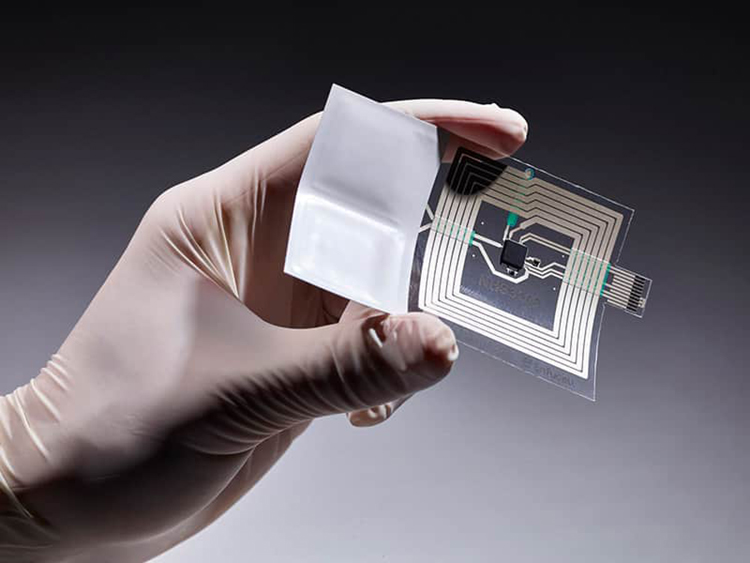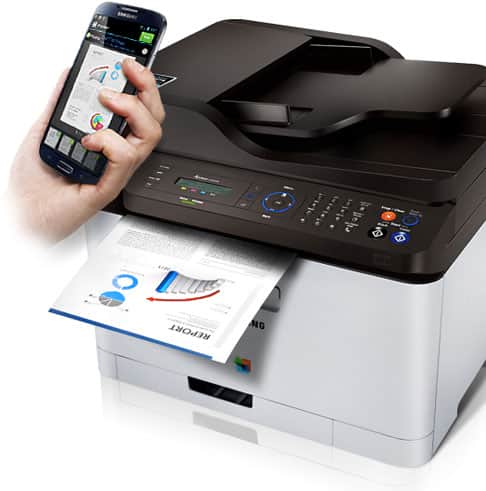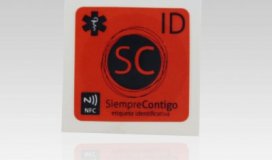Researchers at the University of Grenoble Alpes have developed a method for printing the electronics in a Near Field Communication (NFC) 13.56 MHz RFID tag, using metal-based inks on PowerCoat paper. The system was tested with two printing methods and three sintering methods for conductive ink to create the tag's loop antenna. The work was conducted with researcher Mohamed Saadaoui, of the Ecole des Mines de Saint-Etienne, Centre de Microélectronique de Provence, in Gardanne.
The research was conducted as a doctoral thesis for Victor Thénot, sponsored by paper company Arjowiggins, using PowerCoat, an Arjowiggins brand of paper products designed for the printing of electronic circuitry.
The project, titled "Printing and Selective Sintering of Metal based Inks on Paper; Optimization of Electrical Properties of RFID-HF Loops for Industrial Production," leverages a smooth paper substrate designed specifically for printed elections. Thénot's doctoral thesis defense took place in July, 2017, and is now being released in the form of a paper.

Most NFC tags and other passive RFID tags are built from etched copper or aluminum antennas and a chip applied to polyimide substrates, or PET, PEN or PVC material. Alternatively, if the electronics are printed, that is typically accomplished using conductive inks on a plastic substrate. However, the Grenoble Alpes researchers note that both the printed and non-printed versions of tags, with the plastic substrate, have a significant carbon footprint.
The group sought to find a way to provide a renewable solution, explains Denis Curtil, a research engineer at the University of Grenoble Alpes, with printed RFID tags on paper, that offered a good performance rate. They designed the printable tag system to offer tag makers a paper alternative to plastic, non-recyclable materials more typically used in RFID tags, he says.
Cellulose fibers present in paper serve as the most abundant polymer on Earth, the researchers say, and provide a renewable source that can serve as a substrate for printed electronics. "The substrate being paper, this resource is bio-based, renewable and recyclable," says Nadège Reverdy-Bruas, an associate professor at the University of Grenoble Alpes and the project's supervisor. "Another advantage is its low cost compared to other substrates dedicated to printed electronics."
Grenoble Alpes researchers needed the paper to withstand heating of up to 180 degrees Celsius during processing. The team used a sintering process following the application of ink to make the ink material on the paper conductive, without requiring heat above 180 degrees. Researchers used two processes for printing the tags—screen printing and flexography—in each case creating an NFC antenna loop with a four-turn pattern. They then measured the tag's ink geometrical properties, such as thickness, and tested the electrical performance.
In the case of screen printing, the antenna was printed onto PowerCoat paper using an ASM SMT Solutions DEK Horizon 03i printer with a polyester mesh screen. The resulting tags, Reverdy-Bruas says, proved to be the highest quality for micro-particle inks, in terms of electrical performance.
The flexographic roll-to-roll process consisted of an anilox-engraved cylinder with a fluid ink. In this method, the ink was transferred onto a printing plate (photopolymer in relief), and then onto the paper substrate. "One of the advantages of this process," Curtil says, "is that it is widely used for packaging and labelling on paper and plastics."

The flexography version consisted of a reel-to-reel machine with a 30-centimeter-wide reel and two hot-air dryers, as well as infrared and Adphos-NIR drivers at a speed of 8 meters per minute. The quality for this method was the lowest of the three, however. The final result, the found—in terms of electrical performance—was somewhat lower than screen printing using micro-particles.
Sintering worked well on the paper, the researchers determined. The NFC tags didn't respond to interrogation at the sensitivity of a chemical-etched tag; however, Curtil says, it still operated well enough to enable most NFC applications in which a tag would be read via a smartphone's built-in NFC reader.
With this NFC printing method on paper, Reverdy-Bruas says, the resulting tags not only would be less expensive and more renewable than plastic versions, but also could be more easily built into paper products. "It now becomes possible to integrated intelligence in all printed medias," she states.



